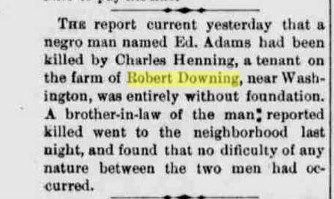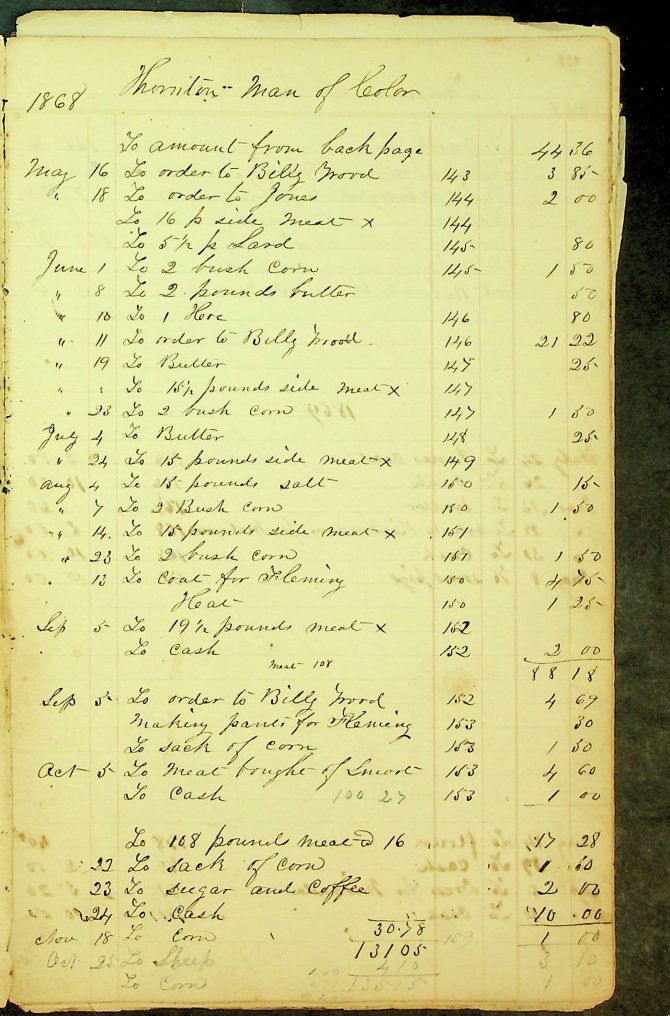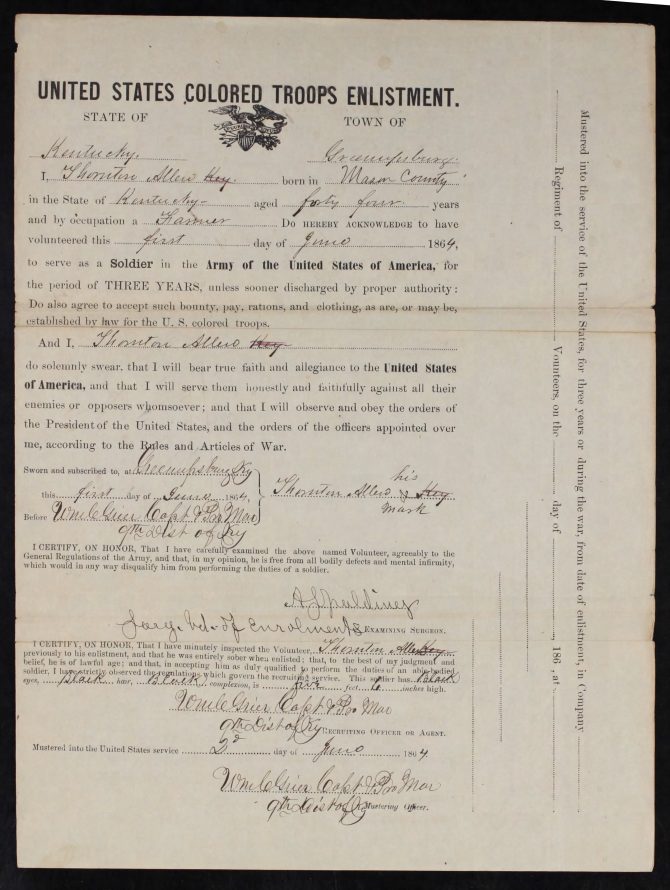This marks the second installment in our exploration of the Mackoy and Downing Families Collection, following the initial blog post on October 18, 2023. Delving into the historical material spanning the period before, during, and after the Civil War, we gain unique insights into the complex tapestry of the past. It's crucial to approach this collection with an understanding, acknowledging the use of terms that may be considered offensive today. History, at times, reveals uncomfortable truths that can evoke emotions ranging from anger and sadness to shame. To enhance comprehension, we recommend consulting the library’s historical newspapers database for a broader perspective on the events and people shaping Mason County.
While media provides one lens, private accounts offer an illuminating alternative.

Maysville Daily Evening Bulletin Newspaper Archives April 18, 1885

From the diary of Cornelia Downing, April 17, 1885. Page 63
TEXT: “Thunder & lightning at night Charley Haney killed a black man on Uncle Bob Downing’s place.”
Navigating genealogy becomes especially intricate for descendants of enslaved individuals. Names like Sippio, Tom, and others are scattered throughout records, offering cryptic hints to their past.

(TEXT: “Wm. Gates Dr *illegible* Bbes fine flour by his man Sippio. Bran short midling.” )
The 1892 diary of Cornelia Downing (pages 136-138) captures the racial tensions surrounding a smallpox epidemic. The community's blame on African Americans for allegedly bringing the disease into the area is documented, reflecting the pervasive prejudices of the time.
Several paragraphs of note include the following:
“Mrs. C came in so excited said, “Oh Miss Downing the men in the store are very much excited over some-thing and I think they said the colored man who is sick at Mr. Frank Boyd’s has smallpox it was not long before we found she had not made a mistake.”
“Every body were so excited and so mad at the negro for they think he had probably been exposed and run from it. The men were all vowing vengeance on the negroes so many of them were with him at church; he was sick at some of their houses & they rubbed & worked with him to keep him from cramping.Florence Hawes came over while we were eating, sat down in the dining room door & talked while we ate of course we all talked more or less of the danger & that its spread would be through the colored people”.
One compelling figure in the collection is Thornton Allen, born into slavery around 1820. He first captured my notice in one of the daybooks for 1868, where his page is headed with “Thornton Man of Color”. He later is referred to as Thornton, or Thornton Allen.

Daybook from 1868 showing "Thornton Man of Color"
He married Hannah Robinson and fathered eight children: Kate, Edward, Maranda, Fleming, Kelson, Thornton, Mattie and James. Birth records for the children have them under a variety of ‘owners’: Marshall Key and John Kegnon being two of them. Only the youngest, Mattie and James, were not born enslaved.
Thornton enlisted into the Union army on June 1st, 1864 at Greenupsburg, Kentucky. He served in the Civil War in the 100th regiment, United States Colored Infantry, Company I. His name is part of the African American Civil War Memorial (plaque C-99). He was never issued a pension, despite serving.
On his enlistment papers, ‘Key’ was first written for his last name. This could refer to the same Marshall Key mentioned earlier.
As the ledgers progress, there are many more mentions of Thornton, especially as he, and others in his family, came to work for Thomas Downing in Washington, Mason County, Kentucky. There are notations of items being bought, wages paid, and Thomas giving Thornton money for a coffin when Hannah died in April of 1878.
There is no record of Thornton Allen’s death nor his burial, though court records point to him being deceased prior to April 1887.

Colored Troops Enlistment form
The Mackoy and Downing Families Collection presents an opportunity to confront the complexities of history, encouraging readers to explore various perspectives and sources. By delving into private accounts, historical newspapers, and external references, we aim to weave a cohesive narrative that brings forth the diverse experiences embedded in this collection.
Further articles regarding enslaved/slave owners whose names are in the collection:
The Daring Slave Rescue at the Sroufe House – Maysville Online.com, 2 Feb 2016
1852 Augusta and Dover KY Stampede – Dickinson College, House Divided Project
Rice Boulton Slaves Escape to Canada – The Oberlin Evangelist, Vol. 15, Oberlin, O. 13 April 1853.
A Slave Case – Another Triumph of Freedom – The Anti-Slavery Bugle, 24 March 1855, p 2.
NKY Views page on Mason County Slavery Items
In a Barn, A Piece of Slavery's Hidden Past – Patricia Leigh Brown, The New York Times, 6 May 2003.
Bound for Canaan: The Epic Story of the Underground Railroad, America’s First Civil Rights Movement;
Bordewich, Fergus M.; New York: Amistad, 2006, ©2005.
Grapevine Dispatch: the voice of Antislavery Messages; Miller, Caroline R. ; Milford, Ohio : Little Miami Pub. Co., 2011.
Kentucky Slave Narratives: A Folk History of Slavery in Kentucky From Interviews With Former Slaves; Federal Writer’s Project; Bedford, Mass.: Applewood Books; [Washington, D.C.] : Library of Congress, 2006.
Slavery in Mason County, Kentucky: A Century of Records 1788-1888; Compiled by Caroline R. Miller, Published by The National Underground Railroad Museum, Inc., copyright 2001
Uncle Tom’s Cabin, or, Life Among the Lowly; Stowe, Harriet Beecher: New York : Signet Classics, c2008.
Harriet is said to have been inspired to write the novel after the horror of witnessing a slave auction at Washington’s Courthouse.
The National Underground Railroad Freedom Center 50 E Freedom Way, Cincinnati, OH 45202
Written By Jessica Johnson, Library Associate, Local History and Genealogy Department




Add a comment to: Unveiling the Mackoy and Downing Families Collection – A Different Perspective